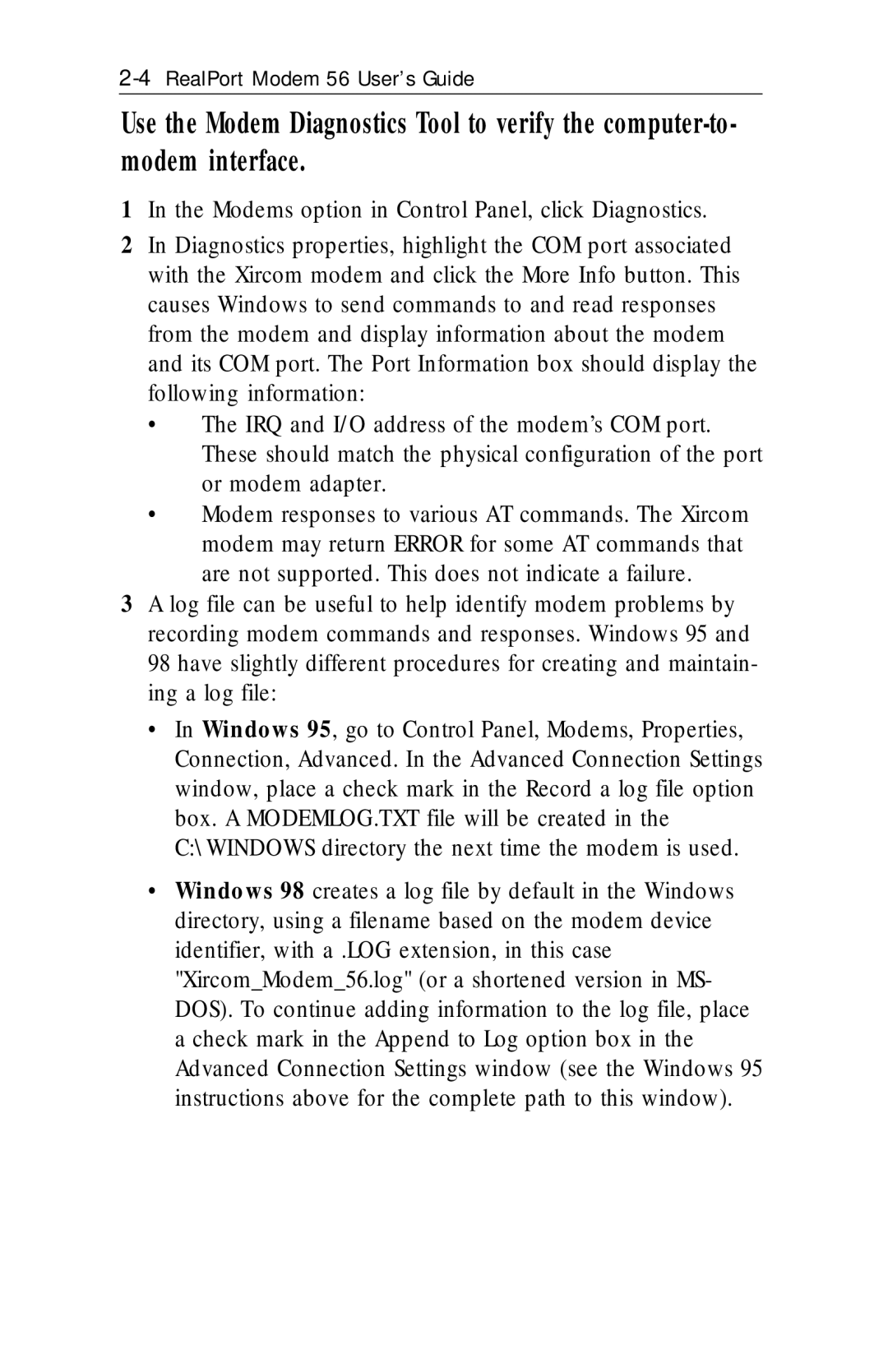2-4 RealPort Modem 56 User’s Guide
Use the Modem Diagnostics Tool to verify the
1In the Modems option in Control Panel, click Diagnostics.
2In Diagnostics properties, highlight the COM port associated with the Xircom modem and click the More Info button. This causes Windows to send commands to and read responses from the modem and display information about the modem and its COM port. The Port Information box should display the following information:
•The IRQ and I/O address of the modem’s COM port. These should match the physical configuration of the port or modem adapter.
•Modem responses to various AT commands. The Xircom modem may return ERROR for some AT commands that are not supported. This does not indicate a failure.
3A log file can be useful to help identify modem problems by recording modem commands and responses. Windows 95 and 98 have slightly different procedures for creating and maintain- ing a log file:
•In Windows 95, go to Control Panel, Modems, Properties, Connection, Advanced. In the Advanced Connection Settings window, place a check mark in the Record a log file option box. A MODEMLOG.TXT file will be created in the C:\WINDOWS directory the next time the modem is used.
•Windows 98 creates a log file by default in the Windows directory, using a filename based on the modem device identifier, with a .LOG extension, in this case "Xircom_Modem_56.log" (or a shortened version in MS- DOS). To continue adding information to the log file, place a check mark in the Append to Log option box in the Advanced Connection Settings window (see the Windows 95 instructions above for the complete path to this window).
